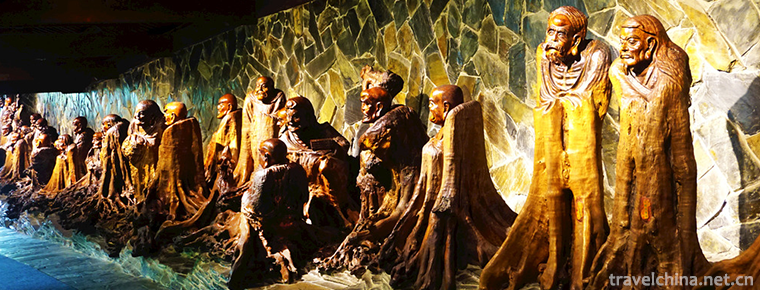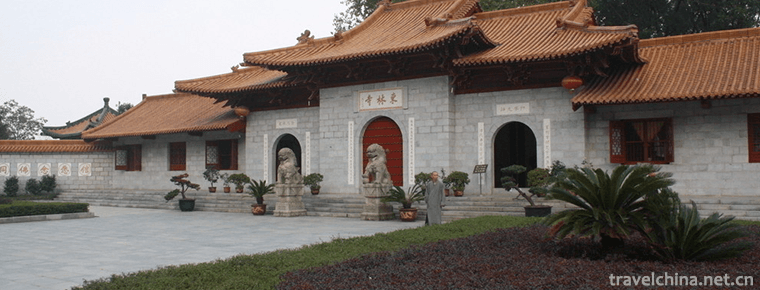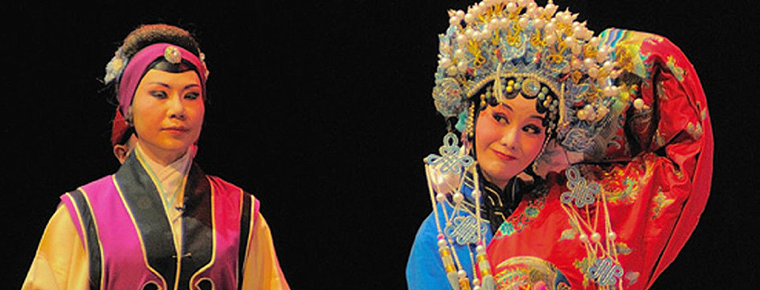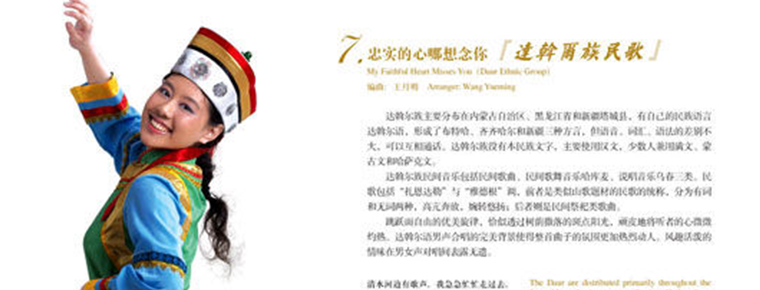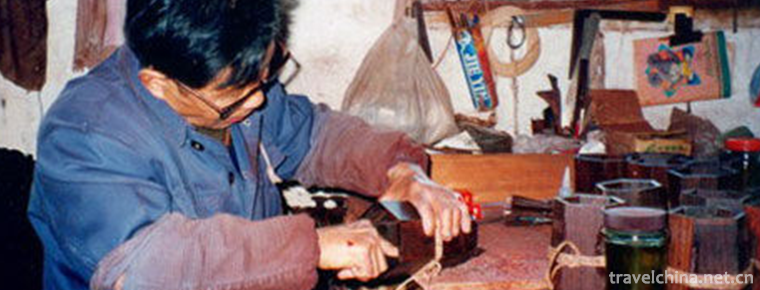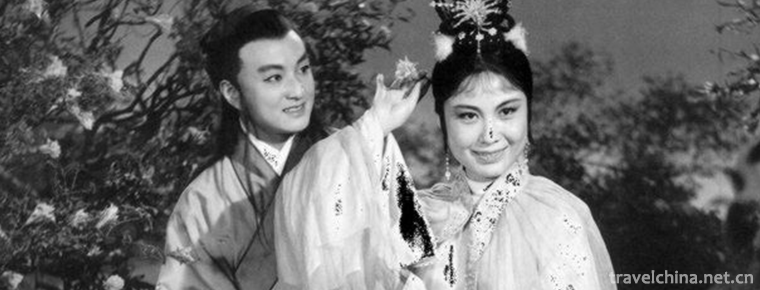Buddhist music
Buddhist music
Buddhist music, the music used by Chinese Buddhist temples and believers in religious ceremonies. Buddhism believes that music has the function of "offering" and "praising Buddha". There are many forms such as vocal music and instrumental music.
Buddhist music, referred to as Buddhist music, refers to Buddhist music used to clarify Buddhist principles and promote Buddhist Dharma, but also refers to music created by the world in praise of Buddhism. Buddhist music is usually solemn and pure. It contains the feeling of compassion. It makes people move after listening, arouse the heart of joy, and move the idea of goodwill. It can be said that Buddha's music is the unique sound of Buddha's enlightenment and a pure lotus blooming in the music garden. Buddhist music can also be divided into Buddhist chant music, ritual music and Zen music.
Buddhist music originated from Fanzhao in East Ayu Mountain, Shandong Province. Yushan Fanchan is the earliest one in China. In the four years of Emperor Taihe of Wei Ming of the Three Kingdoms (230 A.D.), King Cao Zhi of Chen visited Fish Mountain and felt the God system of Fish Mountain, so he deleted the original works of "Prince Rui Ying Ben Qi" "Song of the Prince" (now bathing Buddha praise) and "Song of the Jade". Because of the voice, the voice was voiced, accepted and inhibited, and the law was imparted by God, the emperor of today took care of it and built up its vigor. But "think scholar's clan, spread more than 3,000 voices, in Qi Ze forty-two" spread to the later "Yushan Fan" or "Yushan Chan", later abbreviated as "Fan Chan", flourished in Qiliang, popularized Sui and Tang Dynasties.
During the Tang Dynasty (804-850), the Japanese monks, such as Kunghai and Yuanren, invited Sanskrit to take root in Dahara, Japan, which is called the "Fish Mountain Statement". Master Zhenjian is invited to Korea, which is called "Yushan". Therefore, Cao Zhi has always been respected as the founder of Buddhist music, Fan Zhe. Yushan has also become a synonym for the standard "jungle cavity" of Chinese Buddhism Fan Zhe.
On May 20, 2006, Shanxi Wutai Mountain Buddhist music was approved by the State Council to be included in the first batch of national intangible cultural heritage list.
On June 7, 2008, Buddhist music Yushan Fancho and others were listed in the second batch of national intangible cultural heritage list with the approval of the State Council.
historical origin
Buddhist music is the music developed from Van Cho. From the Three Kingdoms, from the declaration of the Five Mings of India, the popular saying is the voice of monks chanting sutras. It means to praise the three treasures and virtues of Buddhas and Bodhisattvas with pure words, which means purity, desire separation, praise and singing. It belongs to the category of "Dingxue" of "Three Learning", and later gradually extended to the general name of various chants in Buddhist rituals.
Yushan Fanchao is the earliest Fanchao in China. Emperor Taihe of Wei and Ming Dynasty of the Three Kingdoms (230), King Cao Zhi of Chen visited Yushan and felt the God system of Yushan. He began to create the "Yushan Fanchao" or "Yushan Fanchao" of "thinking of scholars, spreading more than 3000 voices, and"Yushan Fanchao"or"Yushan Fanchao"of"Qize forty-two". Later generations referred to as"Fanchao"solved the problem of"Sanskrit repetition, giving shield of Chinese singularity"and"Gui is in Shengwen". The famous monks and laymen, such as Zhiqian, Kang Monk Club, Qiyun ancestors'commentary on Chen Si, Silk Faqiao, Zhixin Keys, Xinqian, Monk Debate, Hui Ning, Xiao Ziliang and Emperor Wudi, advocated the inheritance and development of Fanjiao, which flourished in Qi and Liang dynasties, and popularized Sui and Tang dynasties. During the Tang Dynasty (804-850), the Japanese monks, such as Kunghai and Yuanren, invited Sanskrit to take root in Dahara, Japan, which is called the "Fish Mountain Statement". Please come to Korea, called "Yushan". From 1777 to now, after Yongwu Zen Master, who is the inheritor of Fan Ze, vowed to carry forward his vows, excavate and sort out the original source, and inherit the glorious legacy, in June 2008, the State Council announced the second batch of national intangible cultural heritage protection projects, now known as "Yushan Fan Ze". There are monographs such as the Collection of Papers on the Chinese Fish Mountain Fan-cho Cultural Festival, the Collection of the Fish Mountain Fan-cho Declaration and the Important Law of the Inheritance of the Chinese Fan-cho.
With Cao Zhi's experience, after the creation and advocacy of famous monks and laymen such as Zhiqian, Kang Monks'Club, Qili, Silk Faqiao, Zhiyi, Xinqian, Monk Debate, Hui Ning, Xiao Ziliang and Emperor Liang Wudi, he began to try to use Chinese folk music to create new voices and adapt Buddhist music, so that ancient Indian declarative music was gradually integrated with Chinese traditional culture, and Chinese Van Xie went on to a complicated stage. The road of prosperity and development has been flourishing up to now. From this we can know that the ancient Buddhist music and the present Buddhist music are all music developed from the Sanskrit. Therefore, Cao Zhi was honored as the founder of Chinese Buddhist music, the ancestor of Fan Zhe.
Found
Buddhist music originated in the Vedic period of India. The Buddha formulated the Buddha according to the Samaveda, which described the singing method of the Rigveda. The Buddha refers to the Buddha's praise, which facilitates the promotion of the Buddha's Dharma. Buddhist music is called Sanskrit Yin, also known as Sanskrit Chan. Sanskrit, from Hindi, is the abbreviation of "Sanskrit Lama". According to the Dictionary of Buddha Guangda, "Sanskrit means purity." "Choke, but also for hiding, mother-in-law, mother-in-law teacher. Free translation means stop and admire. The rise and fall of rhyme and melody are the voice of satire. It is the Dharma of the Van Tu, so it is called the Van Chao.
From the 6th to 5th centuries B.C., Buddha Sakyamuni used music when he founded Buddhism in India. He used the singing of "purity and elegance" to make speeches on Buddhist scriptures. After about the 3rd century B.C., Buddhist music gradually spread to Asia and other parts of the world along with Buddhism. Because of different nationalities and regions, Buddhist music absorbs different national folk music in the process of spreading, thus producing different styles of Buddhist music.
spread
Buddhism was introduced into China during the reign of Emperor Ming of the Eastern Han Dynasty (58-75). Buddhist music from India and the Western Regions is mixed with Chinese folk music, so Chinese Buddhist music contains not only Chinese national tones, but also Indian or Western Regions minority tones. "Xihe Poetry Tales" said: "Li Tang Yuefu has eight pieces, such as Puguang Buddha tune and Riguang Buddha tune, into the Suda tune; nine pieces of Sakyamuni Buddha tune and Miaohua Buddha tune, into the begging tune; nine tunes, such as Damiao to the extreme, interpretation, into Yueyue tune; Mani Buddha tune into double tunes; Sumi seven Buddha tunes, Ritengguang Buddha tunes, into Shang tune; four tunes, such as Brahma Buddha tune, into feather tune; Shixing Buddha tune, into general Buddha tune; Ti Move the wind." It shows that these Buddhist songs have the characteristics of Chinese folk style. In the Sui and Tang Dynasties, with the prosperity of various Buddhist sects, Buddhist music reached its peak.
Inheritance and protection
protective measures
In 2008, Changzhou City of Jiangsu Province participated in the declaration of "Buddhist Music (Sanskrit chanting at Tianning Temple)".
Donga County of Shandong Province participated in the declaration of "Buddhist Music (Fish Mountain Fanchao)"
"Buddhist Music (Sanskrit Music of Daxiangguo Temple)" declared by Kaifeng City, Henan Province
"Buddhist Music (Straight Kongkaya Music)" declared by Mozhugongka County of Tibet Autonomous Region
Xiahe County of Gansu Province participated in the declaration of "Buddhist Music (Dauder of Buddhist Music in Labrang Temple)"
"Buddhist Music (Qinghai Tibetan Chanting Tune)" declared by Xinghai County of Qinghai Province
"Buddhist Music (Temple Music of North Wudang Temple)" declared by Pingluo County, Ningxia Hui Autonomous Region
Selected into the second batch of national intangible cultural heritage list, traditional music project category, serial number 637.
First batch of national intangible cultural heritage
In 2006, Beijing Zhihua Temple Beijing Music and Shanxi Wutaishan Buddhist Music entered the protection system of the First National List of Non-material Cultural Heritage Representatives promulgated by the State Council. This event marked the awakening of Buddhist music protection consciousness in the Buddhist community itself and all walks of life. Buddhist music has always been rooted in Chinese traditional music in the course of its development in the past 2000 years and has been inherited with the development of Chinese traditional music. In fact, Buddhist music in China is an integral part of traditional Chinese music and should become a part of China's intangible cultural heritage.
"Yushan Fanjiao" is the second batch of national intangible cultural heritage
In 2008, Donga Fish Mountain Fanxiao in Shandong Province was declared as a national intangible cultural heritage by the State Council. Yushan Fanchan is the earliest Chinese Sanskrit. Historically, Yushan is the standard Chinese Buddhist pronoun for the authentic Sanskrit and is recognized as the birthplace of Buddhist music. Since the loss of Yushan Fanchao for thousands of years, Shi Yongwu, a Zen master with the mission of inheritance, has successfully declared Yushan Fanchao as the second batch of national intangible cultural heritage protection projects in June 2008.
Inheritance value
Wutai Mountain Buddhist music is an important part of Wutai Mountain Buddhism. After nearly 2000 years, it still echoes in the mountains. In 2004, Wutai Mountain Buddhist music was announced as the first pilot project of national folk culture protection project in Shanxi Province, and in 2006 it was listed in the first national intangible cultural heritage list.
The important reason why Wutai Mountain Buddhist music can be inherited to this day is that it has strong practicability. Buddhism's ritual of law has been called "Sound Buddhism" in history. Since the founding of Mount Wutai Buddhism, Buddhist music has always been integrated into it, which is due to the practicality of Buddhist music.
Buddhist music in Wutai Mountain has a very prominent aesthetic value. In the long historical process, the songs and music of each dynasty and period that merged into Wutai Mountain Buddhism were all popular melodies in the society at that time, with high artistry. Therefore, Wutai Mountain's judicial rituals are all works of art, with a strong appreciation.
Buddhist music in Wutai Mountain has high cultural value. It is the product of the combination of art and religion and a cultural phenomenon in social development. The relics of Buddhist music in Mount Wutai can help us understand the relationship between religion and society, religion and life, religion and art (music), and provide vivid and vivid materials for the study of art creation, transmission and inheritance, as well as for the study of art, religion and sociology.
music appreciation:
https://music.163.com/#/search/m/?s=%E4%BD%9B%E6%95%99%E9%9F%B3%E4%B9%90&type=1

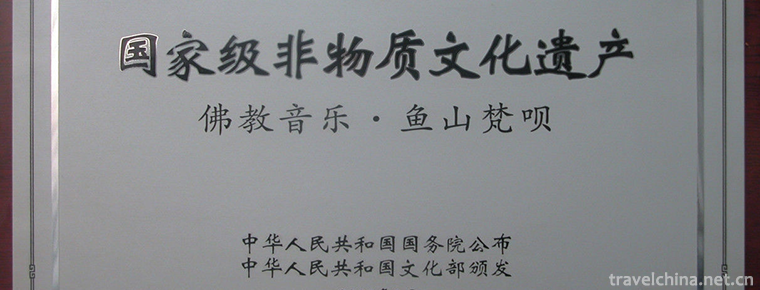
-
Root palace Buddhist Cultural Tourism Zone
Root palace Buddhist Cultural Tourism Zone / Gengong Buddha Country Cultural Tourist Area, National AAAAA Tourist Scenic Area, National Eco-civilization Education Base.
Views: 124 Time 2018-12-07 -
Donglin Temple
Donglin Temple, located at the foot of Lushan Mountain, Jiujiang City, Jiangxi Province, is 16 kilometers north of Jiujiang City and 50 kilometers east of Lushan Luling Street. Because it is east of X.
Views: 123 Time 2018-12-20 -
Saint Sophia Cathedral in Harbin
St. Sophia Church is located in Sophia Square, Daoli District, Harbin City, Heilongjiang Province, China. It is a Byzantine-style Orthodox Church built in 1907.
Views: 169 Time 2019-02-08 -
Chu opera
Chu Opera, a local traditional drama in Hubei Province, is one of the national intangible cultural heritage..
Views: 194 Time 2019-04-18 -
Daur Folk Songs
Daur people mainly live in Inner Mongolia Autonomous Region and Heilongjiang Province, and a few live in Tacheng County, Xinjiang. Daur means "pioneer"..
Views: 283 Time 2019-04-22 -
Blue Clip Valerian Skills
Blue clip valerian technology, the local traditional printing and dyeing technology of Wenzhou City, Zhejiang Province, is one of the national intangible cultural heritage..
Views: 306 Time 2019-05-11 -
Production Techniques of National Musical Instruments
The production of national musical instruments in Suzhou is one of the local traditional handicraft techniques in Jiangsu Province. With a long history, a wide range of varieties, exquisite skills and.
Views: 444 Time 2019-06-05 -
Legend of Cowherd and Weaver Girl
Niulang and Zhinu are one of the four Chinese folk love legends (the other three are Legends of White Snake, Meng Jiangnu Crying Great Wall, Liang Shanbo and Zhu Yingtai). They derive from the star na.
Views: 309 Time 2019-06-08 -
Mount sanshen
The three sacred mountains in Yading, Daocheng, are composed of three snow peaks, xiannairi, yangmaiyong and xianodoji, representing respectively Guanyin Bodhisattva, Manjusri Bodhisattva and Vajrayana Bodhisattva..
Views: 208 Time 2020-10-13 -
Mount Fulai
Mount Fulai is one of the top 40 tourist attractions in China. It is 27 kilometers away from Shunan Bamboo Sea central scenic spot and 10 kilometers away from qidonggou, a 4A tourist attraction. It is composed of more than 80 hills. .
Views: 165 Time 2020-10-16 -
Hunter peak
Hunter peak is located in the Shuangqiao gully of Siguniang mountain, with an altitude of 5360 meters and adjacent to Jianzi mountain. The two peaks stand shoulder to shoulder, with a huge stone pillar in the middle.
Views: 230 Time 2020-11-05 -
Flag dress of Qing Dynasty
In the strong feudal ethical atmosphere of the Qing Dynasty, it is impossible for women to show their curves as modern. In the Qing Dynasty, the cutting system of flag dress always adopted straight line, and the chest, shoulder, waist and buttocks were .
Views: 64 Time 2020-12-11
